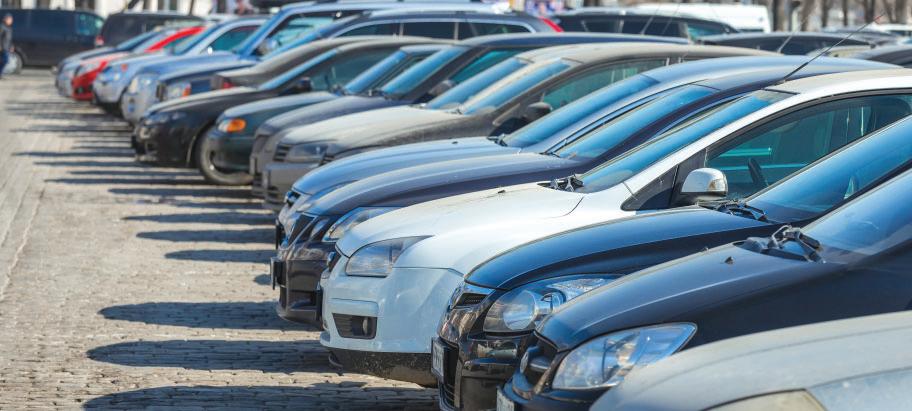
4 minute read
Used Cars in the Untited States
8 Factors Pushing Up the Price of Used Cars in United States
As of April, the U.S. 12-month annual infl a on rate was 4.2 percent. In the same period ending in April 2020, infl a on increased 2.6 percent, according to the U.S. Labor Department.
A closer look at the data shows used-car prices increased 21 percent from April 2020 through April 2021, with 10 percent occurring in April 2021 alone. New-car prices increased 2 percent in the same me frame. While dealers’ new- and used-vehicle inventories are greatly depleted, consumer demand is growing.
The primary factors infl uencing U.S. infl a on over the past year have been the funding and early spending of mul ple trillions of dollars on COVID-19-related federal government programs and roughly $2 trillion in Federal Reserve expansionary monetary policy since early in 2020.
In addi on to tradi onal infl a on causes, the following factors have fueled the boom in used-car prices, especially in the past four months.
1. Computer chip shortage. The global crisis is primarily due to disrup ons in the manufacturing and supply chain. It has delayed the produc on and sale of new vehicles, forcing otherwise new-car consumers into the used-car market and therefore driving up prices due to increased demand.
2. Growth in GDP. A er one of the worst fi rst-half performances in U.S. history, the second half of 2020 registered one of the best back-to-back quarter performances in gross domes c product, with the economy growing 33 percent in the third quarter and 4.3 percent in the fourth.
Continued on Page 33
Continued from Page 32 The U.S. was one of the top performing economies during the COVID-19 global recession and is expected to be a top performer this year, according to the U.S. Bureau of Economic Analysis and the Interna onal Monetary Fund. The economy grew at 6.4 percent in the fi rst quarter and is expected to grow 10 percent in the second, according to the Federal Reserve Bank of Atlanta.
Strong growth in the U.S. and global economies is pu ng pressure on raw materials and products. One of the strongest signs of recovery is that 13 million of the 21 million Americans who lost their jobs during the pandemic are working again.
3. Tax cuts. The federal reduc ons that were passed by Congress and signed into law in 2017 and took eff ect in 2018 have provided relief for most American taxpayers. H&R Block es mated the average personal tax cut was $1,200 based on the tax returns the company processed in 2018.
The savings have allowed greater household consump on.
4. Growth in wages. As the economy recovered, average wage rates in the U.S. in 2020 increased by 4.4 percent, according to the Bureau of Labor Sta s cs. Those addi onal dollars from produc vity and wage growth have aff orded more Americans the opportunity to buy a new or used car, again pushing prices upward.
5. Federal unemployment subsidies. A $600-per-week federal subsidy to state unemployment compensa on was ini ated during the early months of the COVID-19 recession and did not expire un l July 31, while the current $300-per-week federal subsidy expires at the end of September, aff ording many unemployed workers the opportunity to purchase a used vehicle when normally they would not be able to do so.
6. COVID-19 s mulus checks. The federal government has provided three rounds of s mulus checks since April 2020. A family of four earning $150,000 or less would have been eligible for $3,400 in the fi rst round of s mulus checks, $2,400 in the second and $5,600 in the February 2021 s mulus program.
Many of these individuals purchased a new or used vehicle with the help of s mulus dollars.
7. Stock market wealth eff ect. All major U.S. stock markets have rebounded from their steep declines in the early days of the pandemic and today are at or near record highs, giving many Americans the confi dent feeling of a stronger, wealthier country.
This increased confi dence and greater individual wealth is also contribu ng to the upward pressure on the price of new and used vehicles.
8. Replacing older automobiles. According to IHS Markit, the average age of an automobile on U.S. highways in 2014 was 11.4 years; by 2020, it was 11.9 years.
For the rest of 2021, we believe interest rates will con nue to inch up and the chip shortage will improve in the second half. We also believe that the federal government’s s mulus checks and weekly unemployment subsidy will not be renewed. Therefore, we see used-car prices increasing no more than 3 to 4 percent annually in 2022 — good news for those who can aff ord to be in the market then.









